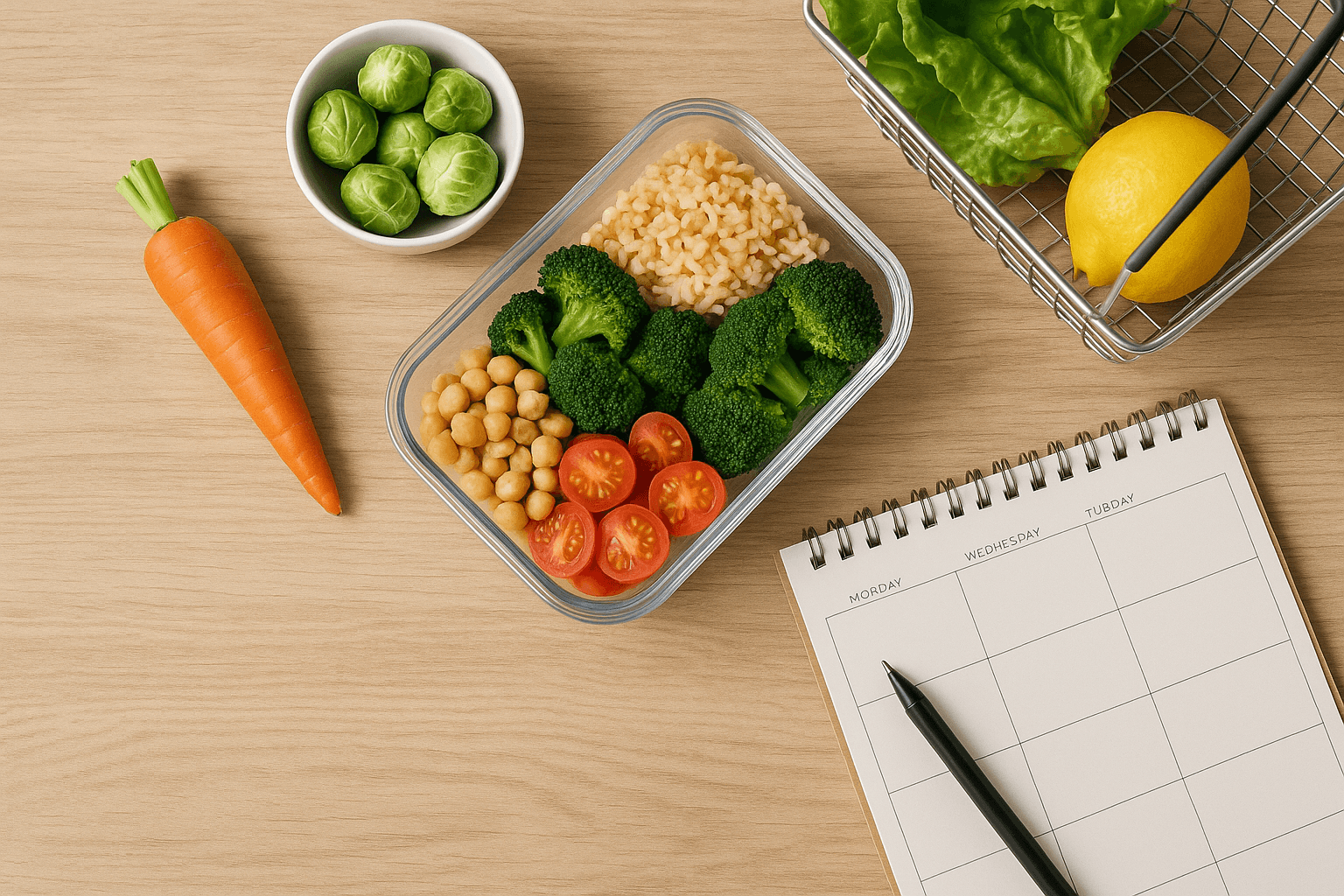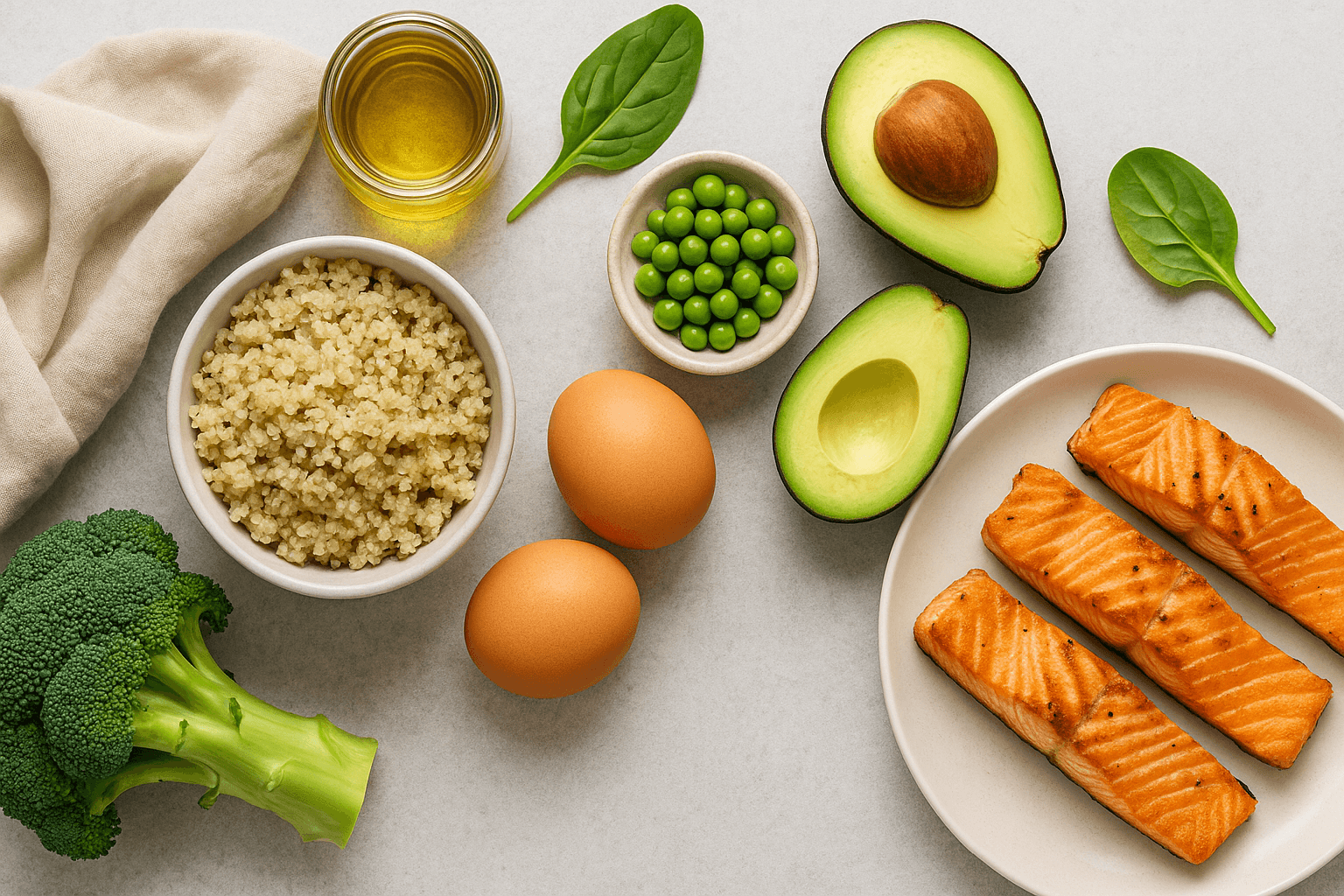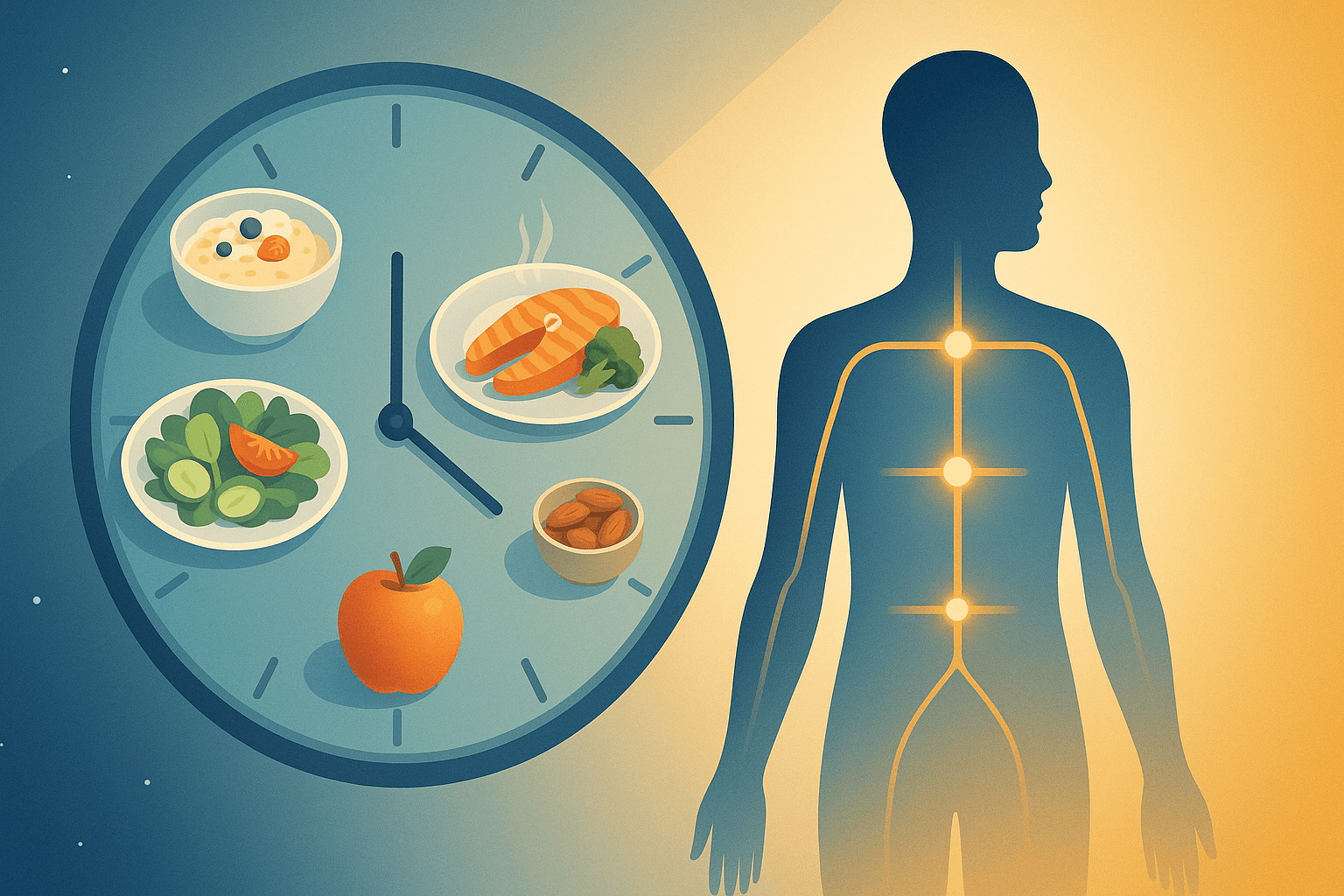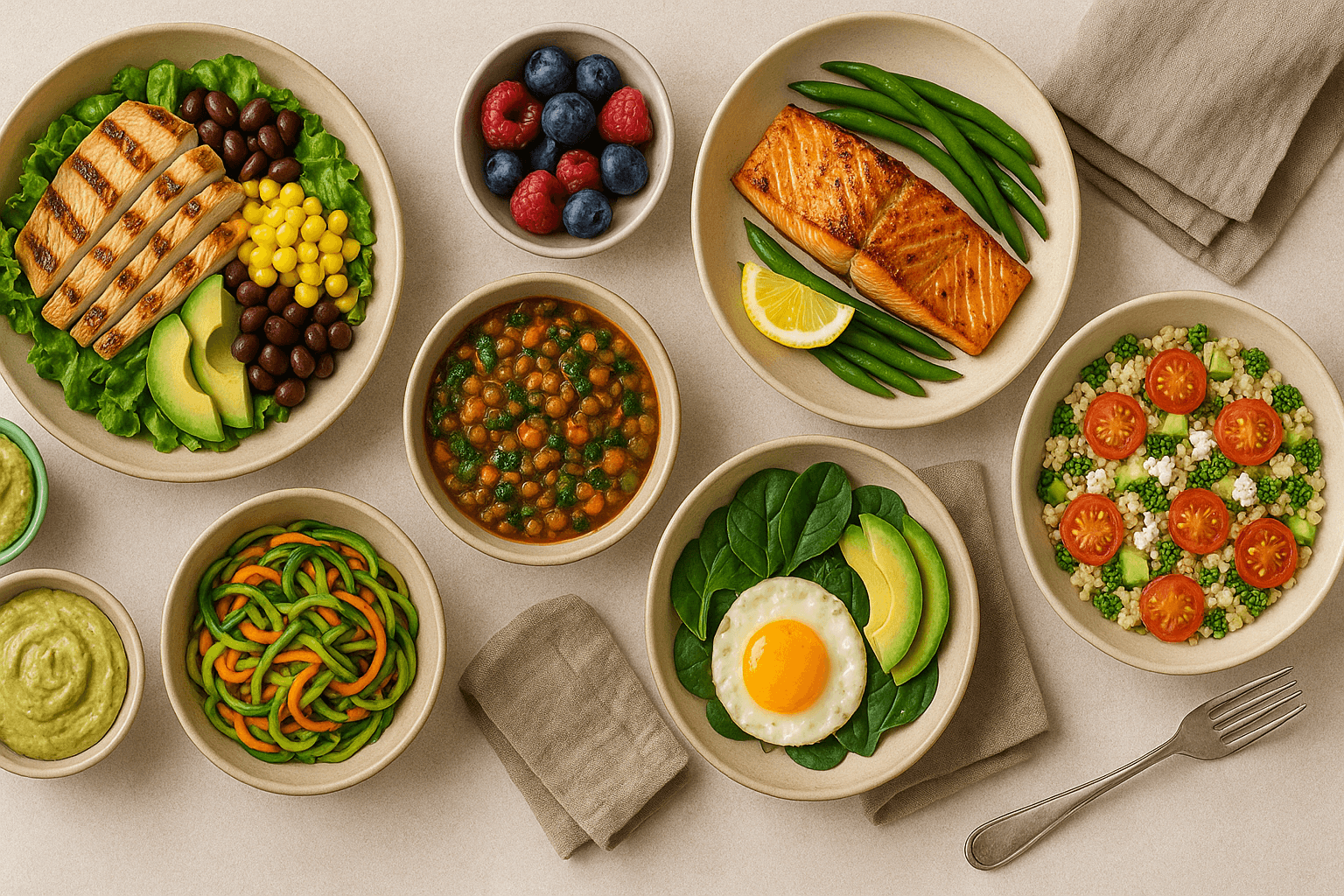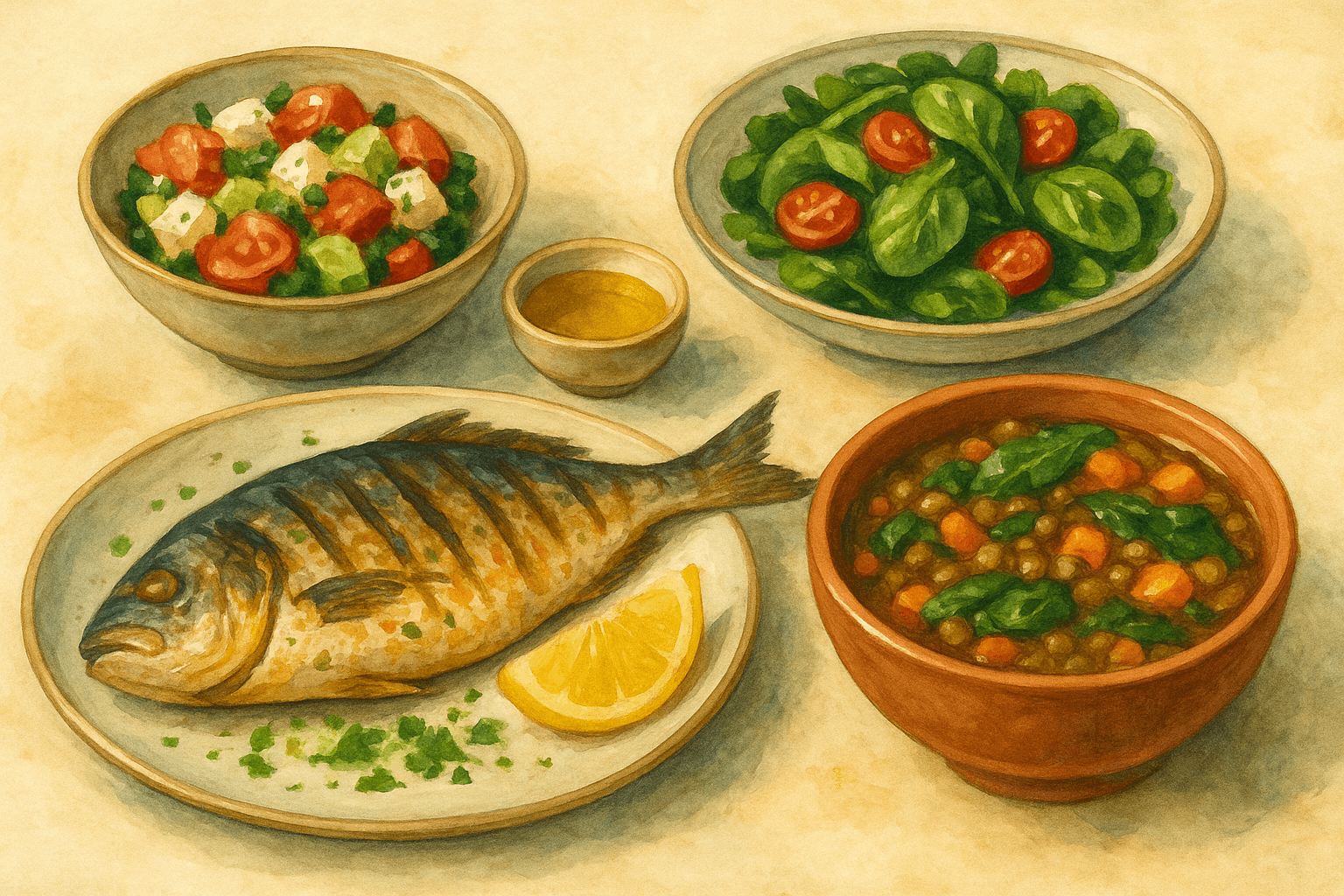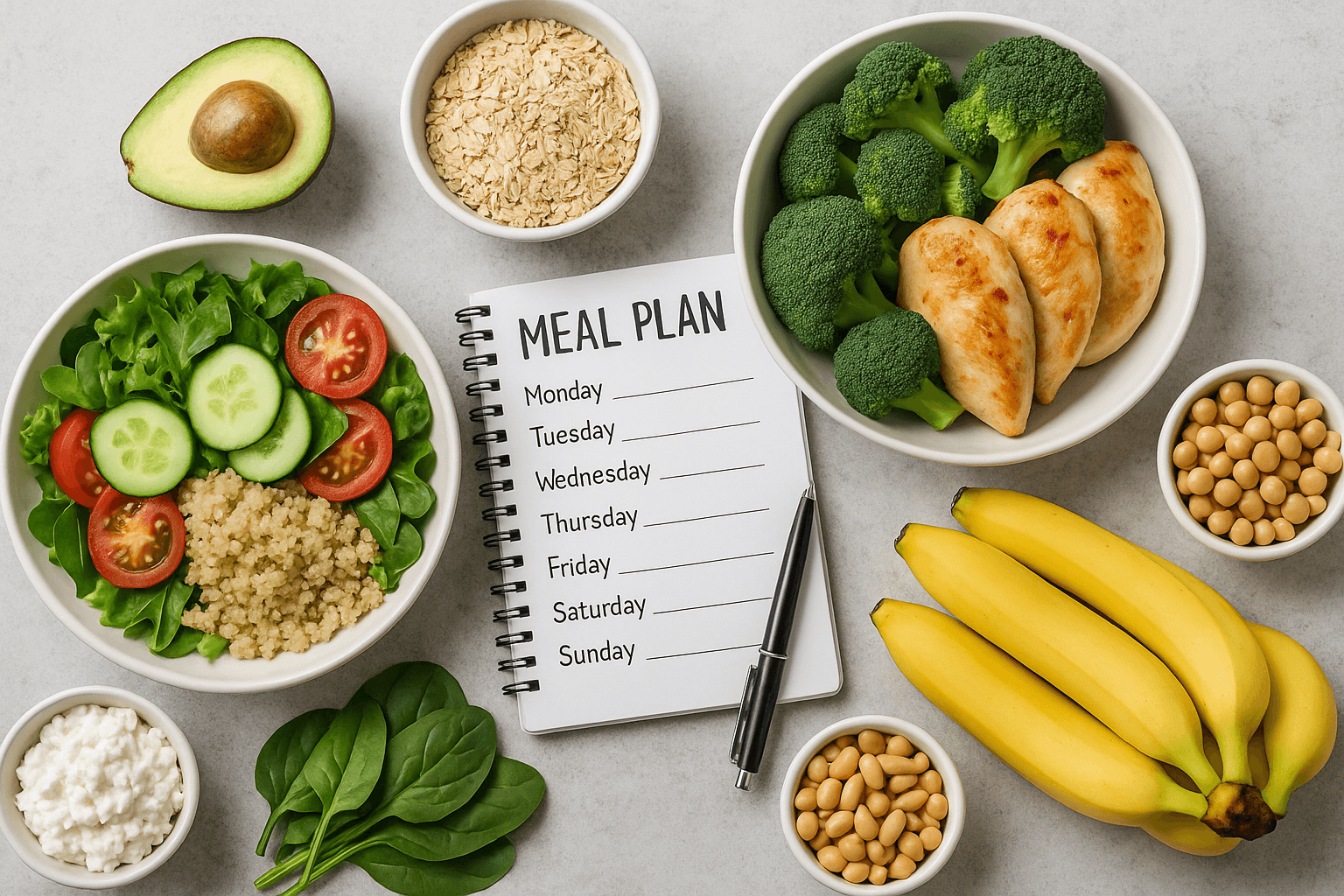Meal Planning Unlocked: Your Practical, Science-Backed Guide to Stress-Free, Nourishing, and Flexible Eating
Published on July 23, 2025

Meal planning isn’t just for meticulous “health nuts” or those with endless hours to spend in the kitchen. In fact, meal planning couldn’t be easier, more transformative — a skill absolutely anyone can learn to eat better, save on groceries and bring a little more peace to daily life. Whether you’re a parent with a million schedules to coordinate, a student on a tight budget, a professional with zero time, or simply someone who wants to feel a smidgen better, meal planning is your secret weapon. It’s not about perfection or pretty spreadsheets — it’s about making your life easier, your food taste better, and your way to health actually enjoyable.
If you’ve ever stared at an open refrigerator and had no idea what to make for dinner, or called in for takeout because you couldn’t take 30 seconds to think of what to eat (or eat), you’ve felt the sting of decision fatigue. Meal planning doesn’t erase all your stresses, but it does silence some of the chaos, allowing you to regain your evenings, eat more nourishing food and look forward to what’s on your plate.
Why Bother With Meal Planning?
Save Time and Stress:
Picture a week in which you never fear what to eat for dinner and never make a last-minute scramble for the grocery store. Planning your meals allows you to know what you’re going to eat before the week even begins, so a trip to the grocery store becomes a breeze and dinner becomes just one more pleasurable part of your day. With a plan, cooking can actually be enjoyable — or, if not, you can quit dreading it.
Eat Healthier, Naturally:
It’s way easier to eat well when you plan ahead. Planning means you will automatically include more fruits, vegetables, whole grains and balanced proteins — because you put them on the list! Meal planning also minimizes the possibility that when you’re tired or harried, you will make an impulsive decision to eat something that is less than healthful.
Waste Less, Spend Less:
Do you ever toss wilted lettuce or moldy bread because you didn’t realize you had bought them? Your shopping follows the logic of your planning — you shop for what you’re actually going to use, and then use what you’ve shopped for. You’ll spend less, throw less food away and feel much more in control of your grocery spending.
Bring Back Variety and Joy:
No more succumbing to the rut of the same three meals every day. The parsley on top tastes great, but planning a few meals ahead of time allows you to try new dishes and explore different cuisines while rotating in family favorites so mealtimes are never boring.
Custom-Fit to Your Life:
Have picky kids? Special dietary needs? A super-tight budget? Meal planning keeps you in the driver’s seat. You can pick and choose what works for your individual household and adjust according to your circumstances.
Opening: REAL LIFE MEAL PLANNING
First, let’s debunk the biggest myth: You don’t need to plan every meal or have a Pinterest-worthy menu. Meal planning can be as involved or uncomplicated as you like. You’re trying to create an environment that leads to success, not to stress.
Step 1: Set Your Goals
Why are you planning meals? Are you trying to spend less, shed a few pounds, eat more veggies or just get a handle on your “what’s for dinner?” dread? Knowing your reason will give you the motivation to stay on track and gauge how you are doing.
Step 2: Choose Your Planning Window
Seven days is not something everyone needs to prepare for. Others prefer to take it one step at a time, with planning for just a few dinners, or a few lunches for work. And some love to batch-cook on the weekends, freezing dishes for weeks to come. Begin by settling on a time period that you feel might be realistic. From there you can always work back up.
Step 3: Create a Master List of Favorites
Round up your household (or just your own mind) and jot down what everyone’s go-to breakfast, lunch, dinner and snack is. Use this as your own personal “menu bank” when you’re planning for the week. Mix in new recipes when inspiration hits, but don’t forget to go back to your go-tos, which can be rock-solid comfort food.
Step 4: Check Your Schedule
Look ahead at your calendar. Late work meeting on Tuesday? Kids’ soccer practice Thursday? Plan easy or pre-made meals for busy nights and more involved ones for days when you have time to cook. This step ensures that food doesn’t go to waste, and it also reduces last-minute stress.
Step 5: Pantry First, Store First
Before you shop, look over what you already have. And they are all easy, using what you already have in your pantry or fridge to create meals around that spinach before it wilts, around those beans you bought on sale, around that chicken in your freezer. It saves money and reduces waste, and in addition to avocados, the method works well for limes.
Step 6: Form a Grocery List That Makes Sense
Organize food by type — fruits and vegetables, dairy products, grains, proteins — to make the process of shopping go quickly. Stay flexible: If you see a great deal, or some gorgeous in-season produce, swap it in instead! Only buy what you’re really going to use, and skip the rest.
Different Approaches to Meal Planning
Meal planning doesn’t have a “right way” to go about it. The best system is the one that fits your life and you want to continue following.
The Classic Weekly Plan:
Choose five to seven dinners, rotate two or three lunches and breakfasts, and keep some backup meals in the freezer or pantry. This type of structure can be especially beneficial for families or people who crave structure and less daily decision-making.
Batch Cooking / Meal Prep:
Cook large batches of grains, proteins and veggies on one or two days each week. Divide into containers for lunches, quick dinners or even a make-ahead freezer meal. Ideal for those who adhere to grab-and-go options or irregular schedules.
Theme Nights:
Theme each night — say Meatless Monday, Taco Tuesday, Stir-Fry Friday, or Soup Sunday. Themes make planning enjoyable and are a great way to mix and match cuisines and flavors throughout the week.
One-Meal-at-a-Time:
If a week of planning feels overwhelming, just prep your dinners, or ease into a meal-prep habit with a few healthy breakfasts or snacks. Get one meal down, then go from there.
Building a Balanced Meal Plan
The healthiest plans are adaptable and filled with variety. Here’s a simple formula:
Protein: Chicken, turkey, fish, eggs, tofu, tempeh, beans, lentils, Greek yogurt — whatever protein source you prefer!
Whole Grains or Starchy Veggies: Brown rice, quinoa, oats, sweet potato, whole grain pasta, or corn.
Vegetable Heavy: Lots of colors and textures. We love using fresh, but frozen will do if that’s all you can find, or even canned.
Good Fat: Include avocado, olive oil, nuts, seeds or a sprinkle of cheese.
Fruits: Fresh, frozen and canned (packed in juice, not syrup) for snacks or dessert.
Treats: A square of dark chocolate, a little something you bake yourself, a pizza night — planned treats are absolutely part of the diet equation!
Check out the “plate method”: Make half your plate vegetables, a quarter protein, a quarter whole grain or starchy food and a small amount of healthy fat.
Sample One-Week Meal Plan
Breakfasts:
The ultimate oat bowl: soaked with chia, served with berries and walnuts
Scrambled spinach eggs with whole grain toast
Greek yogurt with fruit and seeds
Banana, kale and almond butter smoothie
Lunches:
Salad with quinoa, roasted veg, chickpeas etc
Turkey, avocado, tomato, lettuce wrap
Bowl of tofu and edamame over brown rice with shredded carrots
Leftover stir-fry from dinner
Dinners:
Chicken breast on the grill head to head with sweet potato and steamed broccoli
Baked salmon with brown rice and asparagus
Chili with corn, beans, and a side of cornbread
Shrimp stir-fry (with bell peppers, snap peas and brown rice)
Whole-wheat crust pizza loaded with veggies (make it at home!)
Lentil soup with whole-grain bread
Pasta primavera (zucchini, tomatoes and spinach)
Snacks:
Apple slices with peanut butter
Mixed nuts and dried fruit
Baby carrots and hummus
Cottage cheese with pineapple
Troubleshooting: Real-World Meal Planning Challenges
“I don’t like eating the same thing over and over again.”
Get out of a meal plan rut by trying one new recipe a week, or switch up sauces and seasonings on old standbys. Invite family members to select a meal or theme night.
“I don’t have time to cook.”
Prep entire batches of grains or proteins, gravitate toward a slow cooker or instant pot and have a couple back-pocket, speedy and healthful options stored away for the nights when it feels way too overwhelming to cook.
“My family is picky.”
Serve build-your-own meals — taco bars, pasta bowls, salad nights — where everyone assembles their own plate. Less drama, more enjoyment.
“It’s too expensive.”
Take advantage of grocery store sales, save money by buying frozen fruits and vegetables and purchasing beans or grains in bulk, and plan so that you have some leftovers. Home cooking is almost invariably cheaper than eating out, even if you’re whipping up simple and budget-friendly meals.
Special Diet And Goal Oriented Meal Planning
Weight Loss: Prepare satiating, portion-controlled meals and snacks set; no “trigger foods” inside.
Build Muscle: Get enough protein and whole grain foods; structure meals and snacks around workouts for energy and recovery.
Vegetarian/Vegan: Mix up your plant proteins, experiment with new cuisines and focus on key nutrients such as iron, B12 and calcium.
Diabetes/Heart Health: Structure your plan around whole grains, lean proteins, healthy fats, and plenty of fiber; minimize added sugar and sodium.
How to Make Meal Planning Stick
Start small. Or perhaps simply plan three dinners for this week, or prep lunches for a couple of days. Designate a weekly planning day (say, Sunday afternoon), maintain a list of favorite meals and collaborate with family members or roommates. And remember, you don’t have to be perfect. Meal planning is an aid for real life, and not a test you can fail.
You get better and better at it and it just become second nature. Eventually, you will spend less, waste less and have more fun at the table. Meal planning is not about strict rules or feeling like you’re locked into a boring, regimented routine. It’s about feeling in control and less stressed, and feeling good about what you’re eating.
Conclusion: Meal Planning as a Daily Act of Self-Care
Meal planning is a silent superpower. It’s not just about recipes or shopping lists — it’s a way to care for yourself and those you care about. In doing so, you’re gifting yourself more energy, less stress, and more moments to savor your life and your meals.
No matter where you are beginning, every considered meal, every home-cooked supper, every healthful swap is a victory. What counts is progress, not perfection. With meal planning at its core, you will find that you can do more, have more, and enjoy more and be more home more than ever before with a happier, healthier relationship to food—one meal at a time.



